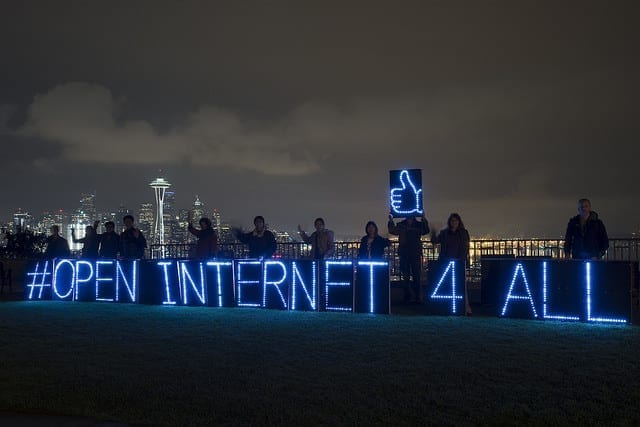When Federal Communications Commission Chairman Ajit Pai decided to scrap net neutrality, he claimed that Obama-era regulations were slowing down the nationwide deployment of broadband services.
A new analysis from the Center for Public Integrity, published Tuesday, calls Pai’s reasoning ‘shallow at best and ridiculous at worst.’
The conclusion shouldn’t come as a shock—Pai’s decision was widely criticized even before the FCC unraveled net neutrality and handed the Internet to telecommunications companies. Republicans, Democrats and a brunt of the American populace agreed that preserving a free online environment is the nation’s best interests.
However, Pai and his cohorts keep claiming that net neutrality was an impediment to progress, stripping corporations of the ability to innovate and offer better products at lower prices.
In its June report, the Center for Public Integrity gives the example of a small community in Riverside County, California.

Up until two years ago, broadband providers were scarce to be found in the county. A widely-dispersed population, scattered along unpaved roads and between mountains, left carriers without incentive to develop a wired and well-connected internet infrastructure.
Riverside, for a very long time, suffered a trend well-known to Americans living outside the confines of big cities and mid-sized towns: a gradual slow-down in broadband expansion, which quickly declined between 2014 and 2016. Americans living in the most inaccessible addresses remained as cut off from the Internet as ever, despite carriers wiring countless new households in the preceding years.
Ajit Pai and the Trump administration continue to blame net neutrality rules for the lag in new broadband deployments post-2015.
But residents of communities like Riverside County, served by the Anza Electric Cooperative, told the Center for Public Integrity that regulation wasn’t what kept them restricted.
“We just didn’t fit into any major carriers’ business plan,” said Kevin Short, the cooperative’s general manager. “I would have to suspect that customer service would be hard-pressed to handle the many miles that it takes to get out here and get to see somebody’s home for a problem.”
The tracts of Riverside County that are today covered by Anza never had an alternative in the form of Verizon or Comcast—Short and his colleagues had to petition the state for funding to create a fiber network capable of reaching rural homes.
Pai’s predecessor, Mignon Clyburn, says her own research contradicts Pai’s many claims about net neutrality stalling broadband expansion.
“I would agree that there is no proof that the 2015 net neutrality rules caused any reduction in broadband investment,” Clyburn told the Center for Public Integrity.
Title II rules governing net neutrality were, writes the CPI, in effect throughout the 1990s and 2000s—an era which coincided with historic highs in broadband infrastructure investment and development.
Instead of over-regulation, the Center for Public Integrity suggests that a 2014 slash in FCC grants to ISPs could be responsible for a downward trend in expansion, along with a whole host of other factors.
Craig Settles, a municipal broadband consultant, gave the CPI a commonsense explanation for the drop-off in deployments—one that had little to do with an overbearing government:
“It’s hard to make money when you have a house per square mile.”
Sources
The basis for killing network neutrality rules is bogus, studies say


Join the conversation!